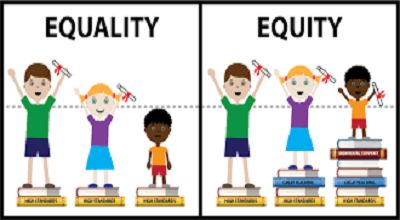Equity principle in teaching
The equity principle in teaching refers to the concepts of fairness and justice in education. Ensuring that all students have equal access to educational opportunities and resources, regardless of their background, abilities, or other individual characteristics. The goal of the equity principle is to eliminate disparities and create an inclusive learning environment where every student has the chance to succeed.
The equity principle in teaching is an educational philosophy that emphasizes the importance of providing all students with an equal opportunity to succeed in school. This means that teachers should make adjustments to their teaching methods and materials to meet the needs of all learners. Regardless of their background, ability, or learning style,.
Key aspects of the equity principle in teaching include:
- Equal Opportunities: All students should have the same opportunities to access high-quality education. Regardless of factors such as socioeconomic status, race, gender, or disability.
- Fair Treatment: Teachers should treat all students fairly, providing them with the support and resources they need to reach their full potential. This may involve adapting teaching methods to accommodate diverse learning styles and abilities.
- Inclusive Practices: Inclusive teaching practices aim to create an environment that accommodates the needs of all students. Including those with diverse backgrounds, learning styles, and abilities. This may involve using varied instructional strategies and materials.
- Cultural Responsiveness: Teachers should be aware of and responsive to the cultural backgrounds and experiences of their students. This includes incorporating diverse perspectives into the curriculum and creating a classroom atmosphere that respects and values different cultural identities.
- Special Education and Individualized Instruction: For students with special needs, the equity principle often involves providing appropriate accommodations. Individualized instruction to ensure they can participate fully in the learning process.
- Access to Resources: Equitable education requires ensuring that all students have access to necessary educational resources. Such as textbooks, technology, and additional support services.
- Providing students with access to high-quality resources and materials
- Differentiating instruction to meet the needs of all learners
- Creating a positive and supportive learning environment
- Building relationships with students and their families
Final Summary
By incorporating the equity principle into teaching practices. Educators strive to create a learning environment that fosters equality, inclusivity, and the success of every student. This approach is crucial for addressing educational disparities and promoting social justice within the education system.
